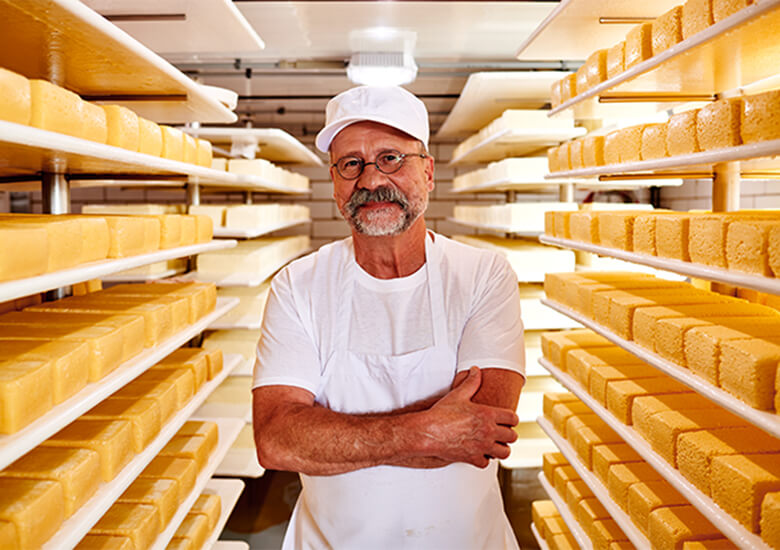Behind the Scenes with Cheese Makers Melbourne: Featuring Floridia Cheese
Behind the Scenes with Cheese Makers Melbourne: Featuring Floridia Cheese
Blog Article
Unlocking the Keys of Artisanal Cheese Making: A Step-by-Step DIY Overview
In the realm of cooking craftsmanship, artisanal cheese making stands as a testimony to the fragile balance in between practice and technology. Each step in the process, from choosing the right milk to improving aging techniques, holds within it a riches of knowledge passed down via generations. As we begin on this journey to demystify the art of developing beautiful cheeses, we are confronted with a tapestry of skills and keys waiting to be unwinded. Join us as we check out the intricacies of this old craft, where perseverance, art, and science assemble to generate flavors that tantalize the senses.
Picking the Right Milk
When beginning on the journey of artisanal cheese production, the selection of milk plays a crucial function in establishing the quality and attributes of the final item. The kind of milk selected impacts the taste, texture, and on the whole account of the cheese.
When choosing milk for cheese production, it is necessary to take into consideration the fat material. Greater fat content in milk can cause a creamier and richer cheese, while lower fat material might cause a drier and stronger structure. In addition, the source of the milk, whether from cows, goats, lamb, or buffalo, adds unique tastes and qualities to celebrity (Floridia Cheese Melbourne). Each sort of milk brings its own subtleties, permitting for a large range of cheese varieties to be crafted based on the picked milk. Ultimately, the choice of milk is a fundamental choice that establishes the foundation for an effective artisanal cheese-making endeavor.
Culturing and Coagulating
To launch the cheese-making process, the essential actions of culturing and coagulating have to be very carefully executed to change milk right into curds and whey. Culturing includes introducing helpful microorganisms to the milk, which after that begins the fermentation procedure. These microorganisms transform lactose (milk sugar) right into lactic acid, developing the acidic setting needed for coagulation. The kind of society utilized can dramatically influence the taste, structure, and ripening of the final cheese product.

The timing and temperature level control during culturing and coagulation are essential factors that affect the last result of the cheese. Correct implementation of these steps is vital to make certain the preferred texture, taste, and consistency of the artisanal cheese being generated.
Draining and Pushing Curds
After the milk proteins have actually coagulated and the curds have been reduced to release whey, the following essential action in artisanal cheese making involves draining pipes and pressing the curds to attain the desired appearance and consistency of the last cheese product. Draining pipes is the process of dividing the curds from the whey. This can be done by transferring the curds right into a cheesecloth-lined colander or mold and mildew and permitting the whey to drain off normally. The time for draining pipes can differ depending on the type of cheese being made and the preferred moisture material.
Pushing helps remove any kind of remaining whey and helpful resources compacts the curds to develop a strong cheese wheel. Correct draining pipes and pushing are important actions that significantly influence the high quality and features of the artisanal cheese being generated.
Aging and Flavor Techniques
Carrying out thorough aging and flavor strategies is pivotal in enhancing the depth and complexity of artisanal cheeses, raising their preference accounts to splendid degrees of refinement and class. Aging plays a crucial duty in establishing the one-of-a-kind flavors and appearances that identify artisanal cheeses. During the aging procedure, cheeses are stored in very carefully regulated environments where factors such as air flow, temperature level, and humidity are adjusted to encourage the development of helpful molds and microorganisms. This controlled setting enables celebrity to develop gradually, developing intricate scents and abundant flavors.
Flavoring strategies also contribute considerably to the last taste of artisanal cheeses. Cheesemakers might pick to introduce added flavors by integrating ingredients such as herbs, seasonings, or even fruits into celebrity throughout the production process. Furthermore, some cheeses are washed or scrubed with numerous liquids, such as salt water or alcohol, to enhance their structures and tastes.
Covering and Storing Cheeses

Verdict
In final thought, understanding the art of artisanal cheese making involves very carefully selecting the ideal milk, adhering to precise culturing and coagulating procedures, draining pipes and pressing curds efficiently, and making use of various aging and flavor techniques. Keep in mind to cover and store your cheeses correctly to ensure navigate here optimum flavor and structure advancement.
Each type of milk brings its own nuances, allowing for a vast variety of cheese selections to be crafted based on the chosen milk.After the milk healthy proteins have actually coagulated and the curds have actually been reduced to release whey, the next important step in artisanal cheese making includes draining pipes and pushing the curds to attain the desired structure and consistency of the last cheese item. Most cheeses ought to be wrapped in wax paper or cheese paper to enable them to take a breath while shielding them from drying out. For cheeses that require to continue aging, such as bloomy skins or washed skins, ensure they are kept in a great environment like a cheese cave or a refrigerator set to the proper temperature. By paying attention to the wrapping and storage of artisanal cheeses, cheese manufacturers and fanatics can maintain the honesty of these specials and totally appreciate their intricate tastes.
Report this page